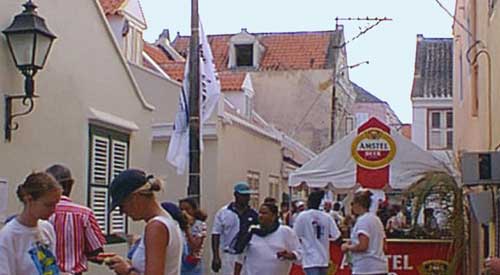|
Punda, view of the former walled city (source RDMZ 1996) |
Old Willemstad, Punda, as said before, has an unmistakable Dutch character. This character is enforced by both the urban grid structure and the small plots with a front street and a back alley, which last mostly were used for transport and disposal of goods.
|
|
Otrobanda, (situated on "the other side" of the Anna Bay, the harbor entrance) in particular the alley area, exudes a pleasant, indigenous Creole atmosphere. Originally build as premises in larger open lots, the "kura" (Yard Area), this yards were filled in with premises for family and servants, thus creating a dense structure of alleys and picturesque views (Alley Area and IJzerstraat Area, now called "Kura Hulanda") |
||
|
Otrobanda,
Alley Area during the Open Day for Monuments 1997 (photo J.J. van der
Harten 1997) |
||
|
|
||



